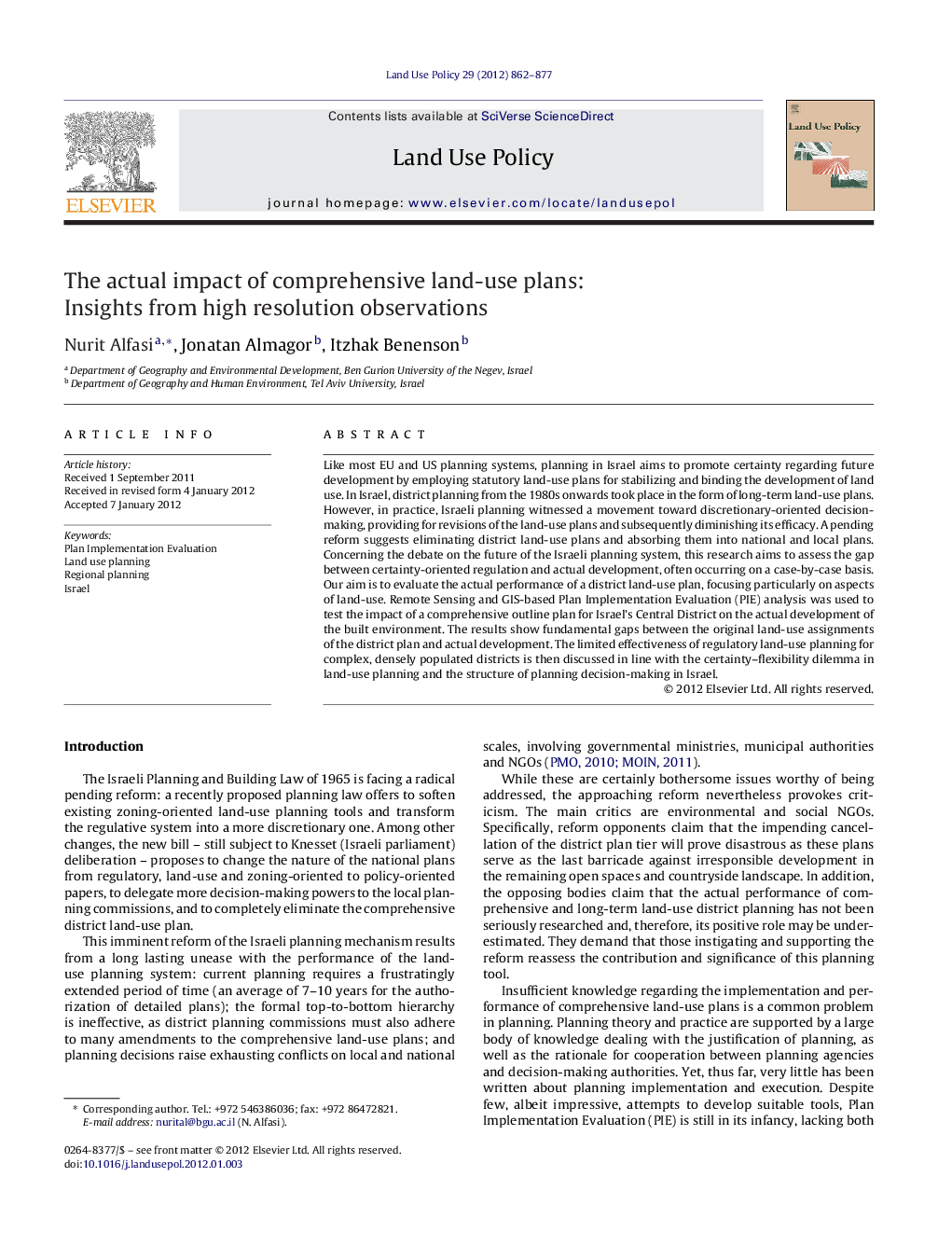| Article ID | Journal | Published Year | Pages | File Type |
|---|---|---|---|---|
| 93339 | Land Use Policy | 2012 | 16 Pages |
Like most EU and US planning systems, planning in Israel aims to promote certainty regarding future development by employing statutory land-use plans for stabilizing and binding the development of land use. In Israel, district planning from the 1980s onwards took place in the form of long-term land-use plans. However, in practice, Israeli planning witnessed a movement toward discretionary-oriented decision-making, providing for revisions of the land-use plans and subsequently diminishing its efficacy. A pending reform suggests eliminating district land-use plans and absorbing them into national and local plans. Concerning the debate on the future of the Israeli planning system, this research aims to assess the gap between certainty-oriented regulation and actual development, often occurring on a case-by-case basis. Our aim is to evaluate the actual performance of a district land-use plan, focusing particularly on aspects of land-use. Remote Sensing and GIS-based Plan Implementation Evaluation (PIE) analysis was used to test the impact of a comprehensive outline plan for Israel's Central District on the actual development of the built environment. The results show fundamental gaps between the original land-use assignments of the district plan and actual development. The limited effectiveness of regulatory land-use planning for complex, densely populated districts is then discussed in line with the certainty–flexibility dilemma in land-use planning and the structure of planning decision-making in Israel.
► Remote Sensing and GIS-based methods provided a long term PIE assessment of outline plans. ► Fundamental gaps between original land-use assignments of a district plan and actual development. ► PIE spots accumulation of amendments to the plan, originally designed to restrict development. ► Development nonconforming to one district plan was incorporated by the following district plan.
